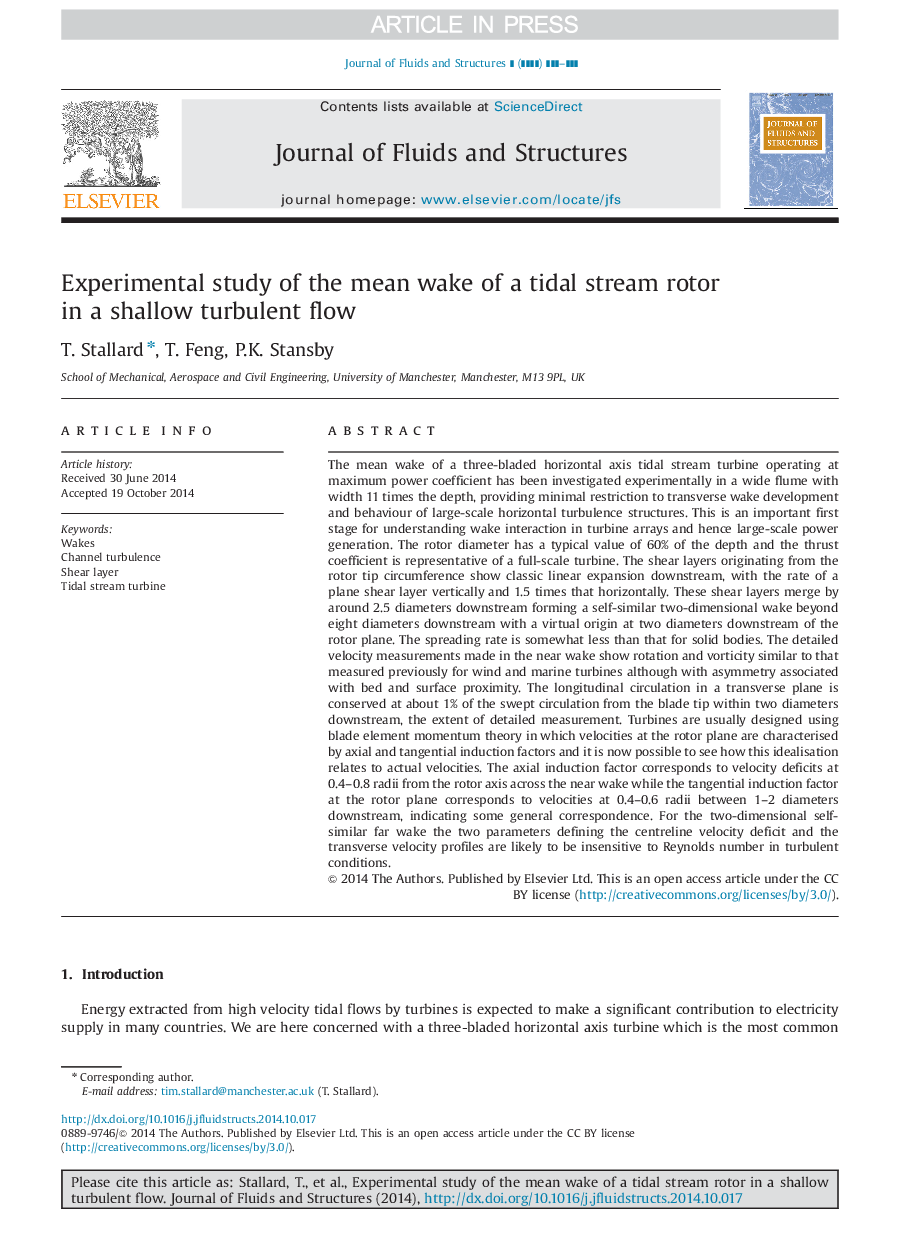| کد مقاله | کد نشریه | سال انتشار | مقاله انگلیسی | نسخه تمام متن |
|---|---|---|---|---|
| 7175966 | 1466593 | 2015 | 12 صفحه PDF | دانلود رایگان |
عنوان انگلیسی مقاله ISI
Experimental study of the mean wake of a tidal stream rotor in a shallow turbulent flow
ترجمه فارسی عنوان
بررسی تجربی از زمان بیدار شدن یک روتور جریان جزر و مدی در یک جریان شتابزده
دانلود مقاله + سفارش ترجمه
دانلود مقاله ISI انگلیسی
رایگان برای ایرانیان
کلمات کلیدی
بیدار می شود آشفتگی کانال، لایه برش، توربین جریان توربین،
موضوعات مرتبط
مهندسی و علوم پایه
سایر رشته های مهندسی
مهندسی مکانیک
چکیده انگلیسی
The mean wake of a three-bladed horizontal axis tidal stream turbine operating at maximum power coefficient has been investigated experimentally in a wide flume with width 11 times the depth, providing minimal restriction to transverse wake development and behaviour of large-scale horizontal turbulence structures. This is an important first stage for understanding wake interaction in turbine arrays and hence large-scale power generation. The rotor diameter has a typical value of 60% of the depth and the thrust coefficient is representative of a full-scale turbine. The shear layers originating from the rotor tip circumference show classic linear expansion downstream, with the rate of a plane shear layer vertically and 1.5 times that horizontally. These shear layers merge by around 2.5 diameters downstream forming a self-similar two-dimensional wake beyond eight diameters downstream with a virtual origin at two diameters downstream of the rotor plane. The spreading rate is somewhat less than that for solid bodies. The detailed velocity measurements made in the near wake show rotation and vorticity similar to that measured previously for wind and marine turbines although with asymmetry associated with bed and surface proximity. The longitudinal circulation in a transverse plane is conserved at about 1% of the swept circulation from the blade tip within two diameters downstream, the extent of detailed measurement. Turbines are usually designed using blade element momentum theory in which velocities at the rotor plane are characterised by axial and tangential induction factors and it is now possible to see how this idealisation relates to actual velocities. The axial induction factor corresponds to velocity deficits at 0.4-0.8 radii from the rotor axis across the near wake while the tangential induction factor at the rotor plane corresponds to velocities at 0.4-0.6 radii between 1-2 diameters downstream, indicating some general correspondence. For the two-dimensional self-similar far wake the two parameters defining the centreline velocity deficit and the transverse velocity profiles are likely to be insensitive to Reynolds number in turbulent conditions.
ناشر
Database: Elsevier - ScienceDirect (ساینس دایرکت)
Journal: Journal of Fluids and Structures - Volume 54, April 2015, Pages 235-246
Journal: Journal of Fluids and Structures - Volume 54, April 2015, Pages 235-246
نویسندگان
T. Stallard, T. Feng, P.K. Stansby,
